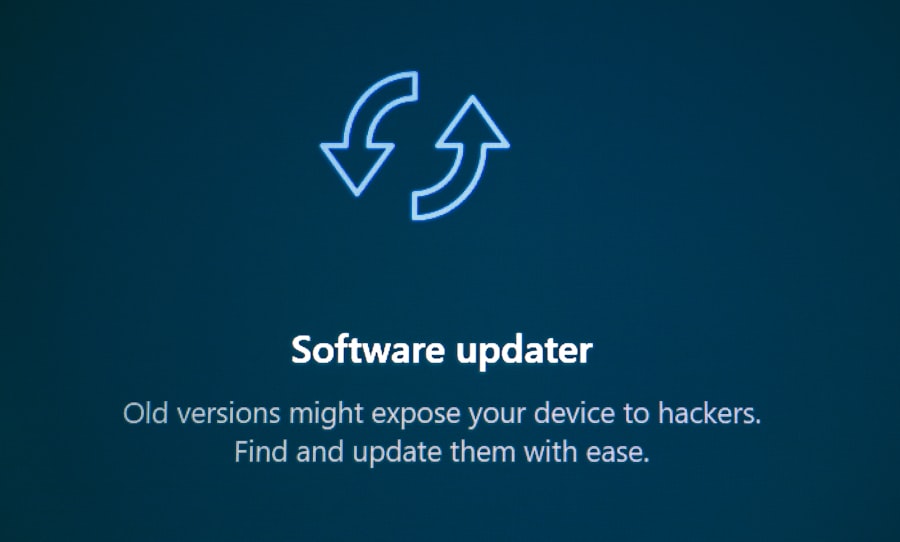System Maintenance Tips
In the realm of cybersecurity, regular system maintenance is not merely a recommendation; it is a necessity. Just as a vehicle requires routine check-ups to ensure optimal performance, so too do computer systems and networks need consistent attention to function effectively. Regular maintenance helps identify vulnerabilities before they can be exploited by malicious actors.
This proactive approach not only safeguards sensitive data but also enhances the overall efficiency of the system. By routinely checking for outdated software, hardware malfunctions, and potential security breaches, organizations can mitigate risks and maintain a robust security posture. Moreover, regular system maintenance fosters a culture of security awareness within an organization.
When employees see that their systems are being actively monitored and maintained, they are more likely to adopt secure practices themselves. This creates a ripple effect, where security becomes a shared responsibility rather than the sole duty of the IT department. By prioritizing system maintenance, organizations can ensure that their technological infrastructure remains resilient against evolving threats while simultaneously promoting a security-conscious environment among their workforce. We take away the complications for the end user. They don’t have to think about what they have to do – We do the thinking for them.
Key Takeaways
- Regular system maintenance is crucial for ensuring the smooth functioning and security of your IT infrastructure.
- Updating and patching software regularly helps to fix vulnerabilities and protect against potential security threats.
- Monitoring and managing user access is essential for preventing unauthorized access and data breaches.
- Implementing strong password policies can significantly enhance the security of your systems and data.
- Backing up data regularly is vital for protecting against data loss due to hardware failure, cyber attacks, or human error.
Updating and Patching Software
The importance of updating and patching software cannot be overstated in today’s digital landscape. Software developers frequently release updates to address vulnerabilities that could be exploited by cybercriminals. Failing to apply these updates can leave systems exposed to attacks that could compromise sensitive information or disrupt operations.
Regularly updating software ensures that organizations benefit from the latest security enhancements and features, thereby reducing the risk of breaches. In addition to security patches, software updates often include performance improvements and bug fixes that can enhance user experience. By keeping software up to date, organizations not only protect themselves from potential threats but also improve the functionality of their systems.
This dual benefit underscores the necessity of establishing a routine for monitoring and applying updates. Organizations should implement automated systems where possible to streamline this process, ensuring that no critical updates are overlooked and that all software remains current.
Monitoring and Managing User Access
Implementing Strong Password Policies
In an age where cyber threats are increasingly sophisticated, implementing strong password policies is a fundamental aspect of cybersecurity. Weak passwords are one of the most common vulnerabilities exploited by attackers, making it imperative for organizations to enforce stringent password requirements. This includes mandating complex passwords that combine letters, numbers, and special characters, as well as requiring regular password changes to minimize the risk of unauthorized access.
Additionally, organizations should consider implementing multi-factor authentication (MFA) as an added layer of security. MFA requires users to provide two or more verification factors before gaining access to systems, significantly reducing the likelihood of unauthorized entry even if a password is compromised. By fostering a culture that prioritizes strong password practices, organizations can significantly enhance their overall security posture and protect sensitive data from potential breaches.
Backing Up Data Regularly
Regular data backups are an essential component of any comprehensive cybersecurity strategy. In the event of a cyberattack, such as ransomware, having up-to-date backups can mean the difference between a minor inconvenience and a catastrophic loss of data. Organizations should establish a routine backup schedule that includes both on-site and off-site storage solutions to ensure data redundancy and accessibility in case of emergencies.
Moreover, it is crucial to test backup systems regularly to confirm that data can be restored quickly and accurately when needed. A backup that cannot be restored is as good as no backup at all. By prioritizing regular data backups and testing their effectiveness, organizations can safeguard their critical information against loss or corruption while ensuring business continuity in the face of unforeseen challenges.
Conducting Regular Security Audits

Effective monitoring and management of user access is a cornerstone of any robust security strategy. Organizations must ensure that only authorized personnel have access to sensitive data and systems. This involves implementing role-based access controls (RBAC) that limit user permissions based on their job responsibilities.
By doing so, organizations can minimize the risk of insider threats and accidental data exposure. Furthermore, continuous monitoring of user activity is essential for identifying suspicious behavior that may indicate a security breach. By analyzing access logs and employing anomaly detection tools, organizations can quickly respond to potential threats before they escalate.
Regularly reviewing user access rights is also crucial; as employees change roles or leave the organization, their access should be adjusted accordingly to prevent unauthorized access. This proactive approach not only protects sensitive information but also reinforces a culture of accountability within the organization.
Conducting regular security audits is vital for identifying vulnerabilities within an organization’s systems and processes. These audits provide a comprehensive assessment of the current security posture, allowing organizations to pinpoint weaknesses that could be exploited by cybercriminals. By systematically evaluating security measures, organizations can develop targeted strategies for improvement and ensure compliance with industry regulations.
In addition to identifying vulnerabilities, security audits also serve as an opportunity for organizations to review their incident response plans and overall security policies. By analyzing past incidents and assessing how effectively they were managed, organizations can refine their strategies and enhance their preparedness for future threats. Regular audits not only bolster security but also instill confidence among stakeholders that the organization is committed to maintaining a secure environment.
Educating Employees on Security Best Practices
Employee education is one of the most effective ways to enhance an organization’s cybersecurity defenses. Human error remains one of the leading causes of security breaches; therefore, equipping employees with knowledge about security best practices is essential. Training programs should cover topics such as recognizing phishing attempts, safe internet browsing habits, and proper data handling procedures.
By fostering a culture of security awareness, organizations can empower employees to act as the first line of defense against cyber threats. Moreover, ongoing education is crucial in keeping employees informed about emerging threats and evolving best practices. Cybersecurity is a constantly changing field; therefore, regular training sessions and updates are necessary to ensure that employees remain vigilant and knowledgeable about potential risks.
By investing in employee education, organizations not only reduce the likelihood of breaches but also cultivate a workforce that values security as an integral part of their daily operations.
Engaging with Security Experts and Consultants
Engaging with security experts and consultants can provide organizations with invaluable insights into their cybersecurity strategies. These professionals bring a wealth of experience and knowledge that can help identify gaps in existing security measures and recommend tailored solutions to address specific vulnerabilities. Collaborating with experts allows organizations to stay ahead of emerging threats while ensuring compliance with industry standards.
Furthermore, security consultants can assist in developing comprehensive incident response plans tailored to an organization’s unique needs. In the event of a breach, having a well-defined response strategy can significantly reduce damage and recovery time. By leveraging the expertise of security professionals, organizations can enhance their overall security posture while ensuring they are prepared for any potential challenges that may arise in the ever-evolving landscape of cybersecurity.
In conclusion, maintaining robust cybersecurity requires a multifaceted approach that encompasses regular system maintenance, software updates, user access management, strong password policies, data backups, security audits, employee education, and expert engagement. By prioritizing these elements, organizations can create a resilient security framework that protects sensitive information while fostering a culture of accountability and awareness among employees. In an era where cyber threats are increasingly prevalent, investing in comprehensive cybersecurity measures is not just prudent; it is essential for safeguarding organizational integrity and continuity.
Maintaining a security system is crucial for ensuring the safety and protection of your property. Regular updates and checks can help identify vulnerabilities and enhance the overall effectiveness of your security measures. For more insights on how to choose the right security monitoring service, which is an essential aspect of system maintenance, you can read our article on choosing the right security monitoring service.










